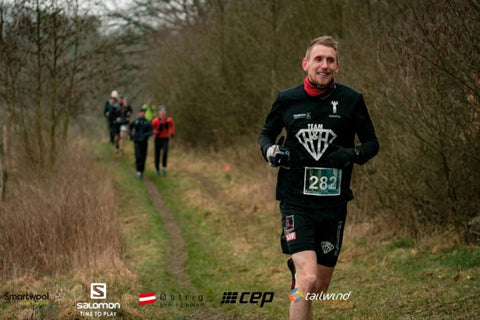
Why To Start Running - And How To Do It!
How to start running?
Running coach and personal trainer Henrik Poulsen explains how to start running
First, it’s important to find your "why". Your “why” will keep you motivated and help you when the energy is low.
Benefits of running
Now you got your “why” let’s look at some of the physiological benefits of running.
Doing exercises and running will strengthens the brain and increases the level of:
- Noradrenaline helps us with our focus and makes us feel active
- Dopamine makes us feel motivated and happy
- Serotonin gives us ease, inner strength, and satisfaction
- Endorphins suppress pain and increase our level of well-being

Now let’s look at which things you should consider incorporating in your weekly running schedule.
The body has two types of energy systems - aerobic (with oxygen) and anaerobic (without oxygen).
When doing aerobic training you’ll optimize the body's ability to transport and convert oxygen, increase oxygen uptake during exercise and improve your endurance. Training at this level will help you build up a good basic running shape.
Anaerobic training will optimize the body's ability to initiate rapid and powerful movements and improve the ability to make more powerful and fast moves in a row. Training at this level is more intense and could be done as intervals.


How to be ready for a race
12 weeks before your race it would be a good idea to focus on running some intervals in your race pace and a little bit faster. By running in a pace which is faster than your race pace will help you feel more comfortable during your race.
When I make programs for my runners we focus on six training zones based on a test result.
- The two first zones are jogging and endurance and most of the training will be in those zones.
- The next zone is called marathonpace and it’s the pace you can maintain for about 2-3 hours, depending on your training and running level. Running in this zone is hard aerobic work.
- The fourth zone is called AT and is threshold training, this is a pace you’ll be able to maintain for approximately one hour.
- The last two zones are anaerobic training zones and running in these zones should be done as intervals.
Need to carry your belongings while running? Find the best running backpacks here.
When you have a race coming up, you must remember to cut down on your training. The number of days are depending on the distance you’re going to compete in. You can use this formula to calculate the number of days: competing distance * 0,5. For example if you’re going to run a marathon the number of days will be: 42*0,5 = 21 days. So, three weeks before your marathon you should start cutting down on your amount of your weekly running distances but try to maintain the same intensity.
If you want to know more about how to prepare for a marathon, read our training guide.

Some useful tips to remember about your style of running
As soon you have found out which running style suits you, keep the following things in mind:
- Run with straight upper body.
- Place your foot under your body’s center of gravity.
- See if you can land on your midfoot.
- Aim for a cadence at 150-170 (elite runner’s cadence is at 180+).
Good advice to make your own program
- Make sure you take it easy in the beginning.
- Be patient (it takes time to build up a great shape).
- The best way to ensure results is to be able to train throughout the entire year.
- Run on different grounds (trail/forest, gravel path, asphalt etc.).
- Train varied (run intervals, pace run, easy slow run, technique training etc.).
- Change one parameter at a time (number of trainingdays, intensity, time spend on training).
Find out more about Henrik Poulen and his coachings here.

